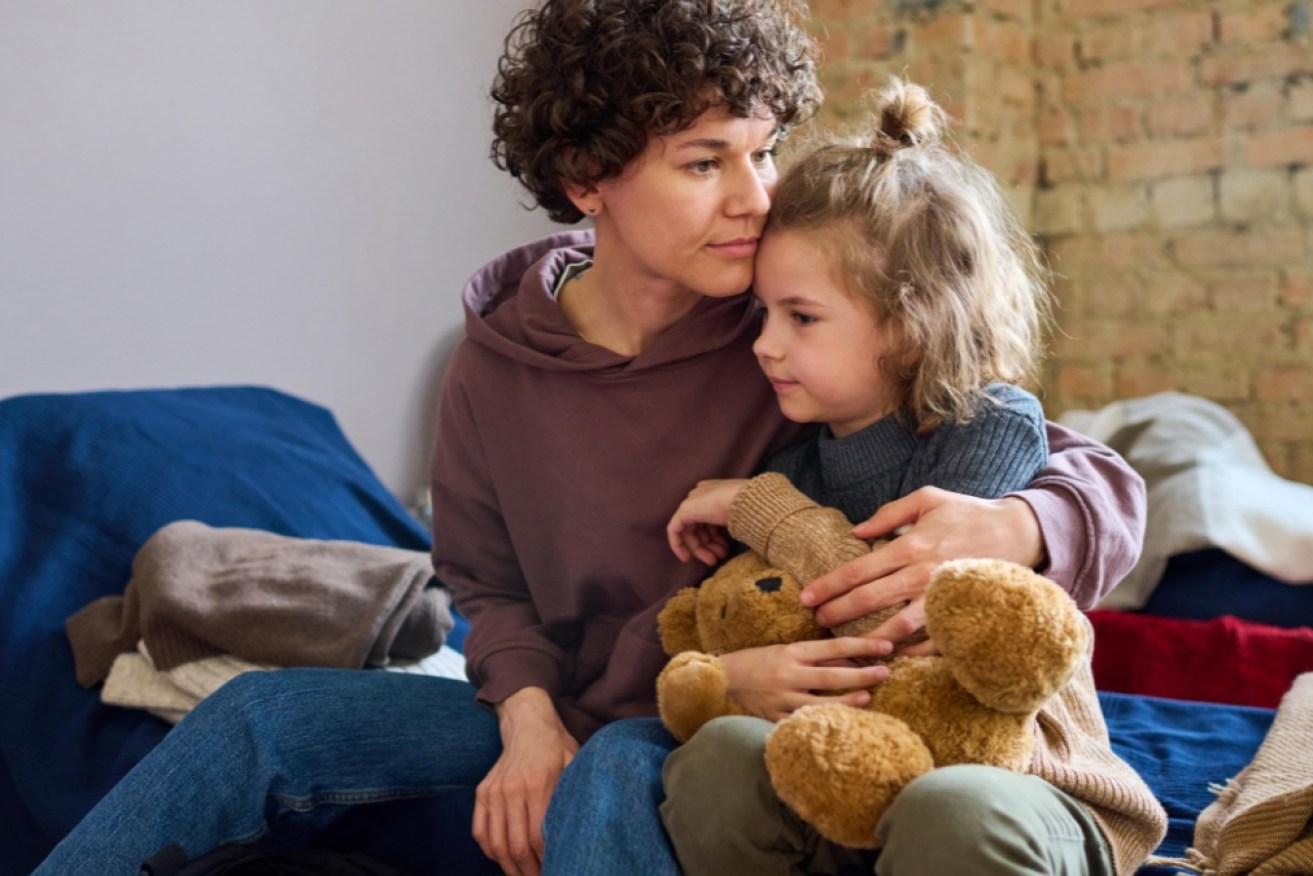Rising tide of homeless people overwhelms support services


Single mothers fleeing family violence are the largest growing group of people seeking homelessness support. Photo: Mission Australia
The crisis of homeless Australians is getting worse, as hundreds of people seeking help are turned away every day, support services say.
The demand for help has grown by 26 per cent over the past three years, according to a Mission Australia report released on Tuesday.
Support services to the homeless are turning away an average of 300 requests for help every day, with most of these requests about accommodation, Australian Institute of Health and Welfare data shows.
Australia’s rental affordability and vacancies hit record lows this year, with just 0.8 per cent of more than 45,000 rental listings affordable for a person earning a full-time minimum wage.
PropTrack analysis of all rental listings on realestate.com.au in April found 16.2 per cent were advertised for less than $400 per week – a year prior, this figure stood at 30.2 per cent.
Mission Australia CEO Sharon Callister told TND the fastest-growing homeless demographics included people experiencing family violence (predominantly single women with young children), followed by women aged over 55, and then the combined over-55 population.
The organisation is also increasingly seeing people who are employed, but unable to meet skyrocketing rents.
“The key problem is that insufficient resources [are] allocated for homelessness services, and for social and affordable housing,” she said.
“And if you combine that with the increases that we’ve had in [Consumer Price Index], astronomical increases in private rental accommodation, all of these have come together to actually create … a housing emergency right across Australia.”
The effects of tight rental markets are reflected in the report; Sydney claimed the dubious title of Australia’s highest median capital city rent at $711 per week in April.
Meanwhile 17,920 people in New South Wales have accessed Mission Australia’s services since 2020 – more than 16,000 above the level of demand in other jurisdictions.
The number of people sleeping rough, or in improvised homes, tents and cars increased by 103 per cent between 2020 and 2022.
During the same period, there was also a 40 per cent increase in people experiencing ‘hidden homelessness’ while living in short-term temporary accommodation.
Prevention is key
Ms Callister said prevention is key to addressing the rising rate of homelessness.
Of the people who approached Mission Australia for help before they became homeless, 94 per cent managed to avoid homelessness.
By comparison, only one in three people who need support when they are already homeless can be assisted into long-term housing.
“The feedback that we get is [people in danger of becoming homeless] just didn’t think about [seeking support], and they just hoped that they could hang on – what they don’t realise at the time is that if we can help them earlier on, then they’re going to have a lot better prospect of success,” Ms Callister said.
She said while investment in social housing and emergency accommodation is needed, with almost one million social and affordable homes needed to be built over the next two decades to meet demand, the report’s findings demonstrate that more investment is also needed in homelessness prevention.
“We see a lot of focus on crisis accommodation and emergency [accommodation], and that’s great for people who are in those situations short term, but it’s not the long-term solution,” she said.
Mission Australia’s report also listed an increase in financial assistance for private renters (more than the 15 per cent Commonwealth Rent Assistance hike announced in the 2023-24 federal budget), and a boost to income support payments (more than the $40 per fortnight beginning in September) as measures that should be taken to address homelessness.
Government action
It’s not just the federal government that needs to solve the issue, with state governments, businesses and community organisations needing to work together, Ms Callister said.
But the federal government needs to take the lead.
The government is currently working on a National Housing and Homelessness Plan; a 10-year strategy to help more Australians access safe and affordable housing.
Stakeholder engagement activities in relation to the plan were set to begin in the second quarter of 2023, but Ms Callister said Mission Australia has still not had a look at it.
It is expected more will be revealed about the plan in the coming weeks.
The Minister for Housing and Minister for Homelessness, Julie Collins, told TND that Australia needs a plan that will have short-, medium- and long-term reforms to address the entire housing spectrum, from home ownership to the “unacceptable” number of people experiencing homelessness.
While Ms Collins didn’t reveal any details of the upcoming plan, the minister pointed to the government’s $67.5 million boost in homelessness funding to the states and territories in March, which came as part of a $1.6 billion year-long extension to the National Housing and Homelessness Agreement.
Ms Collins said this funding complements the $91.7 million invested into youth homelessness through the Reconnect program.








